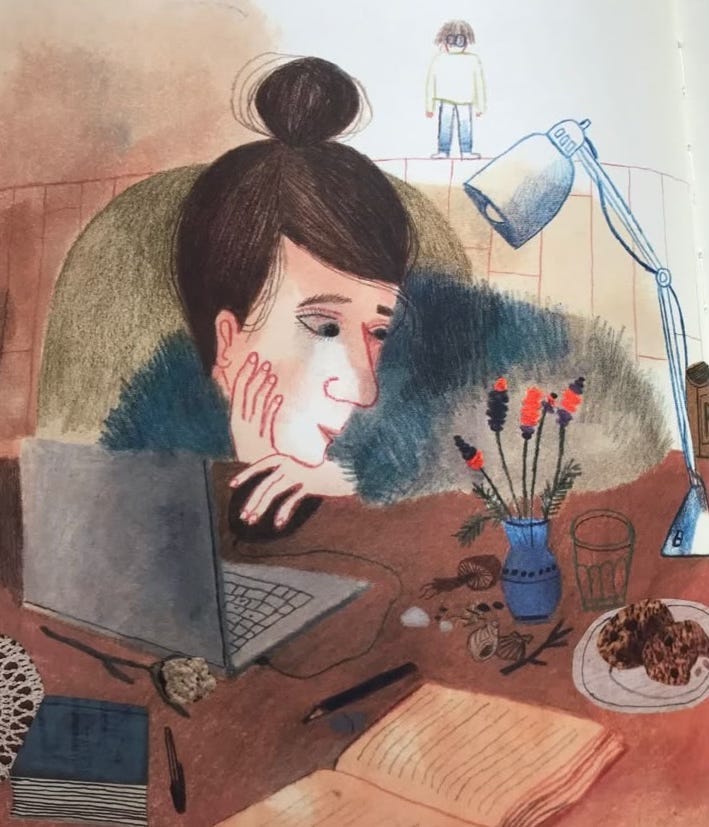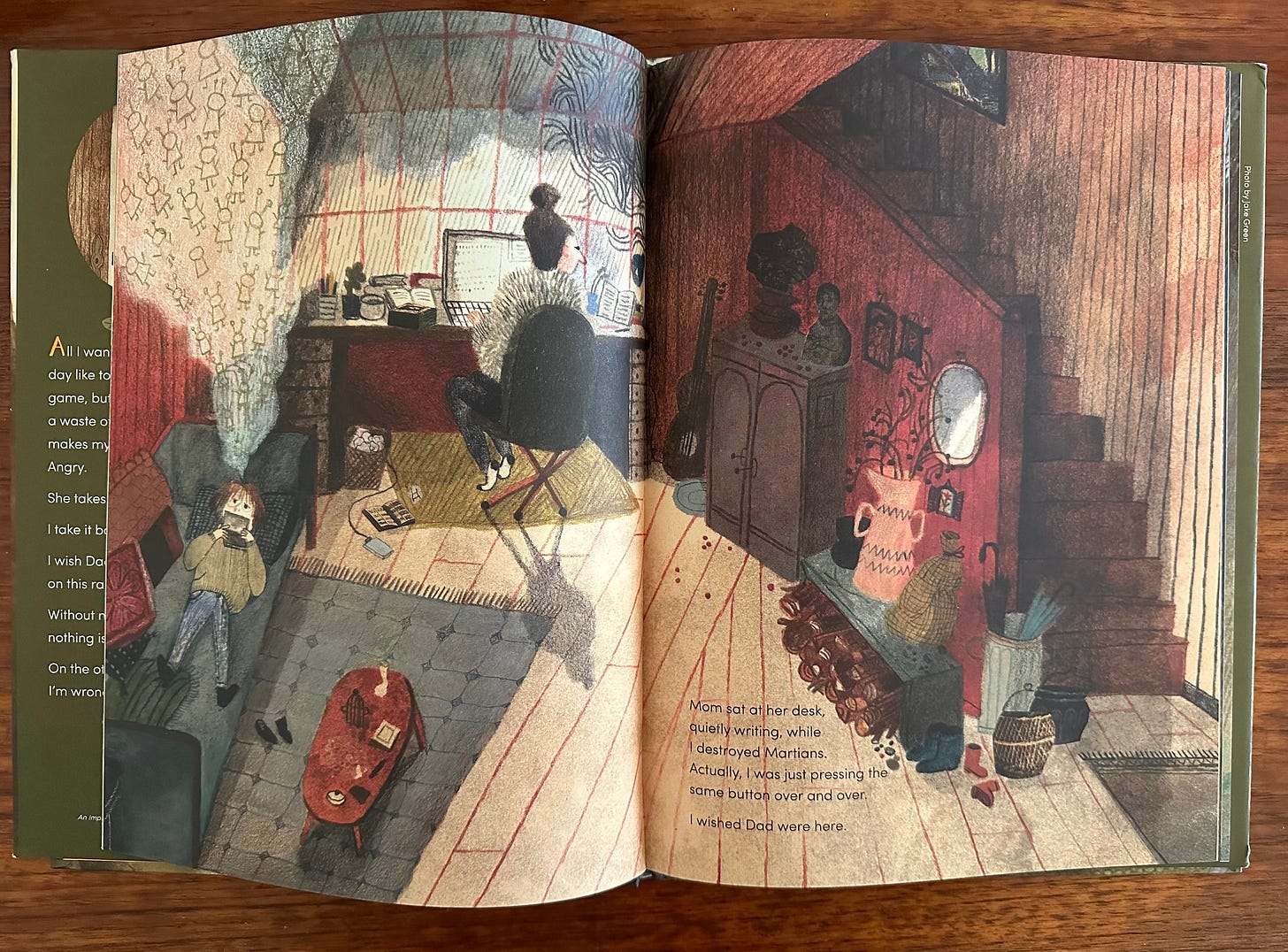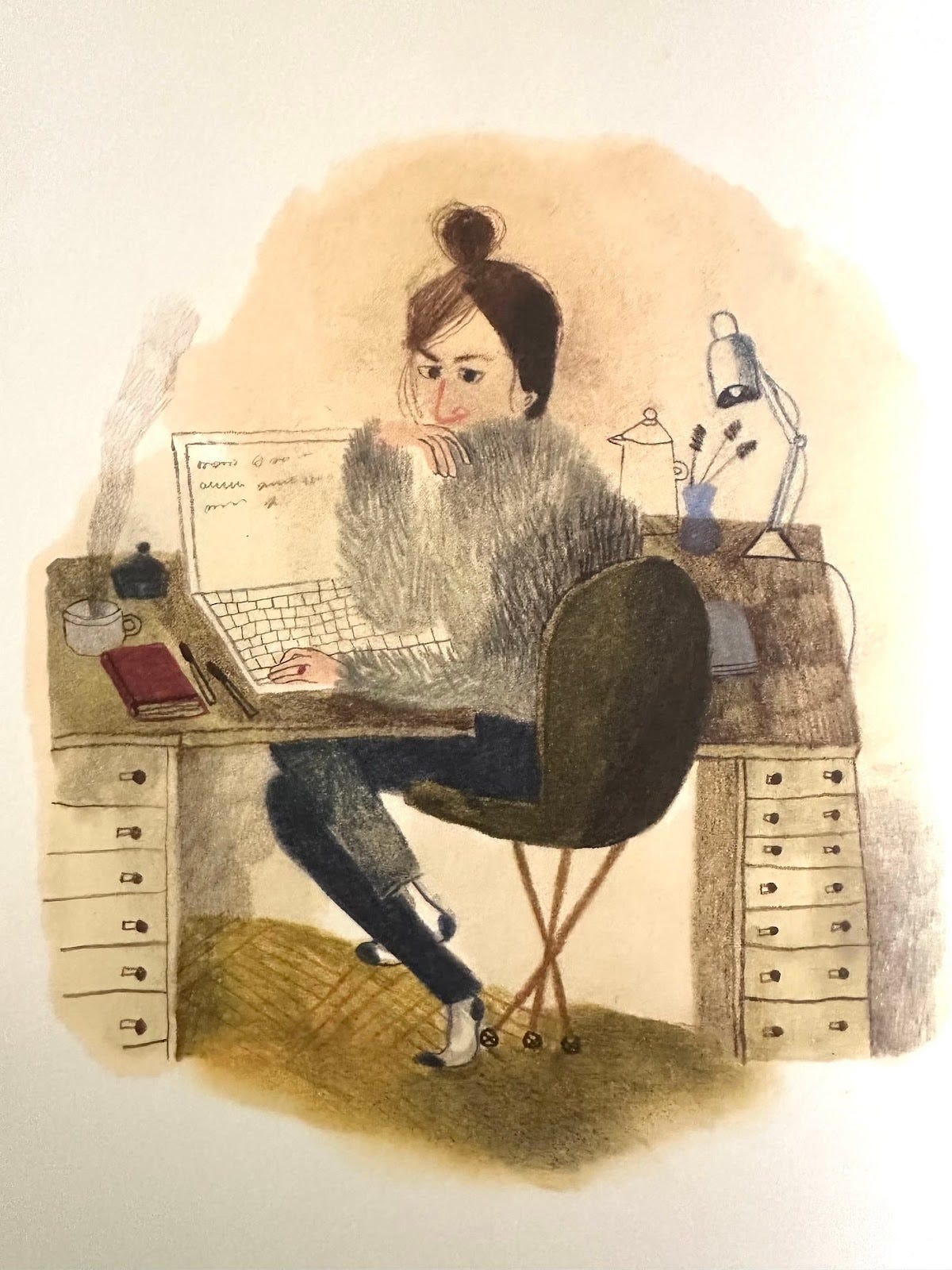How to Write a Newsletter the Right Way
and why sometimes you should do it wrong
If, like me, you’ve been a heavy internet user for decades, you’re probably feeling conflicted about the current state of digital culture. I wish I were eager to tackle new technologies and social media trends, but I’m not. There are only so many times the internet can burn you before you realize you’re in an unhealthy relationship; to think things will change is delusional.
This is not a new phenomenon. It happens to every generation in every field, but something about this new wave of digital media feels different: it’s no longer fun. Maybe I’m just getting old. I was born in 1982, soon after Gen X transitioned into millennials (I’m what is kindly referred to as a “geriatric millennial”). My generation was the last of the analog era and the first to adopt a digitized lifestyle. I’ve been in so many failed relationships with online platforms, tools, and devices, it’s hard not to think I’m the problem. But we all know it’s a losing game. Technologies must evolve and grow to survive, leaving us with two choices: hold on for dear life or abandon ship.
Substack launched in 2017; I joined in 2020 (pre-Moonbow)—so relatively early. This was after 12 years of working on the internet and at the height of the pandemic. I was craving something new and more personal. I believed Substack, a platform that championed long-form writing, would be my antidote. And it was, for a while.
When I joined Substack, I decided not to transfer over my subscribers from my old newsletter and Glitter Guide’s (which, between the two, had almost 100K) and start completely from scratch. I knew the things I wanted to write would not resonate with most of them anyway. Substack was (and still is) a platform for experimentation—a place to grow and try new things with my writing. But like so many other platforms, I see its enshittification1, I can feel it happening. I cringe at all these newbies toting it as the solution to all-things crappy about the internet. Sure, those of us who were here early on thought that, but now it just seems naive.
Still, there are great things about Substack, and I don’t plan on leaving anytime soon. My approach is to stay focused on why I came here in the first place: to experiment, be curious, and connect. Thankfully, I can still do that. But I also have to be smart. Some folks can catapult to success without following guidelines, but the rest of us have to find ways to fuse authenticity with strategy: two opposing poles that are hard to balance, especially for artists.
Which is why I’m writing this post. I don’t usually share this stuff on Moonbow, but it’s been on my mind. Most of my community and the people I subscribe to are authors and illustrators, many of whom are new to the blog/newsletter world, which is refreshing! But I want us to stick around and be successful (whatever that means), so I thought I would share some tips I’ve learned over the last two decades.
The funny thing is, I usually ignore this advice, even though I know it’s useful. A lot of it will depend on your goals. I would never sacrifice style for optimization, but since my goal is not to be #1 on the leaderboard (which, by the way, is about how many paid subscribers you have, not the quality of your content), I don’t really care.
The wonderful but tricky thing about Substack is that it’s a hybrid between a newsletter and a blog (we’re going to ignore all the other bells and whistles for now), which means you no longer have to write short, quippy newsletters with clickbait headlines to drive traffic to a separate website. But that doesn’t mean you should never follow the best practices. Here are some I’ve learned over the years. Play around and see what works for you and your readers; it’s different for everyone.
Titles matter (a lot!)
I don’t think people on Substack think about their newsletter titles enough. Even the talented author and Substack superstar George Saunders’s newsletter titles fall flat. His writing is so good I’m willing to ignore it, but he’s the exception. The title of your post massively influences your open rate, and everyone should want a good open rate. Ultimately, your newsletter's content is more important, especially over time, but if you want to make sure people see that content, title it wisely.
Because your newsletter is also a blog post, its title, subtitle, and contents will influence how people find you on Google or other search engines. If you choose smart titles and consider SEO, you will have a higher ranking when people search for that topic. I get more traffic from Google than I do from Instagram. (Instagram is dead.)
Not all your titles have to be short and snazzy. Substack readers value thoughtful long-form articles. Match your titles to the mood of the content. Don’t trick your readers. Try to find the theme or idea you’re writing about and convey it in a few catchy words. If this is hard for you, look at sites like Vogue, The New York Times, The New Yorker, The Atlantic—see what they’re doing. You’ll discover what works for your style and what doesn’t. You’ll also see how bad so many websites are. I love reading The London Review of Books print version, but its website design bores me and is hard to navigate.
Long titles can be an aesthetic choice, but remember, they will be cut off in an email, so their impact will be on your blog. Consider front-loading your title with what will grab your readers’ attention.
Another option is to write a strategic title for your newsletter subscribers and then change it later on the blog post. Only those reading it in their email will see your original title, but the new one will live in your archive. The New Yorker does this by changing the magazine article titles on its website because it has to attract an online audience differently than its magazine subscribers.
I’m old-school, but I don’t like inconsistent formatting. Whether you write your titles in all lowercase, all uppercase, or traditionally, stick with that style. And this may be controversial (sorry, friends), but I don’t like numbered newsletters unless they are an important part of the storytelling. No one cares that it’s your 5th or 55th newsletter.
Take advantage of subtitles
The subtitles are where you can have fun! I love to party in the subtitle. If your title doesn’t convey everything you want, the subtitle is the place to fill in the rest (again, don’t waste this opportunity by just posting a number!). Consider adding a quote, a quirky list, or a funny punchline. Pretend you're writing advertising copy. Be creative and think about how you can best support your title.
Consider SEO
We know that titles influence SEO, but so do keywords, headings, links, meta descriptions, image optimization, alt tags, etc. I usually write essays, not marketing emails, so I don’t worry about most of that. However, there are times when I consider them. Specific articles (like this one) perform better and are easier to read with headings and relevant keywords. Knowing how and when it’s appropriate to use SEO is just smart writing.
Start strong
How you start your newsletter depends on your writing style, but no matter what, it should grab your readers' attention. You must entice them with your title and draw them in with the first few sentences. I love coming up with titles, even when writing fiction. Sometimes the story or character comes first, but more often, it’s the title. Writing the first few sentences is the hard part.
Pay attention to format
Bad email format is my pet peeve. Format matters! Always use consistent branding, ensure all your images are the same size, add email headers, include dividing lines to separate sections, and use bulleted or numbered lists. Poorly formatted emails ruin the reading experience. Sometimes, it’s the app’s fault, but you can prevent mistakes by previewing how your newsletters look on mobile phones because that’s where most people will read them.
Include images
When newsletters were just emails, including a lot of images was not recommended. But Substack is different. Here, it’s a stylistic choice. Some newsletters only use images, and some only use text, but I think adding a few images to complement your writing can be nice, and they help break up big blocks of text.
But remember, too many large images can cause your writing to be too long for email, requiring readers to click to see more. If your readers don’t know that, they might get confused and miss out on the rest of your newsletter. If you know it will be too long, let your readers know ahead of time how they can keep reading.
Try to use high-resolution images, usually 1200px x 800px or higher. If you’re using images from the internet, check their size beforehand. You may have to dig deep to find one that is of good quality. On the other hand, if your images are too big, they may take too long to load. Use an editing tool like Canva to batch edit your image sizes ahead of time.
Pick an attractive cover image
It seems this is an afterthought to many writers on Substack (or not a thought at all). Maybe it’s because Substack was mostly a text-driven platform in the past, but now it’s incredibly visual. Your cover image is called your “social preview” on Substack. There is a feature that will automatically use the first image in your article as your cover image, or allow you to pull from any of the included images, but don’t use those. Customize your image in Canva. I have a pre-made design set at 1456px x 1408px that I drop my image into (remember it has to be high-resolution or it will be blurry). You may have to test images on your audience. Don’t be afraid to change it if it’s affecting your results.
Another thing to consider is how your cover images look on your profile page. Think of it as your “website” or “portfolio.” Not everyone cares about this, but I always appreciate a beautifully curated profile page.
This should go without saying: never use AI images. I don’t care if people think AI is the future. Fine, if you must, use it wisely, but don’t use it instead of real art made by humans. It infuriates me! I will never be on board with it. I don’t care if I’m left behind. If you’re using AI images in your newsletters, I will unsubscribe.
Credit, credit, credit!
Substack writers not crediting their images has been a hot topic lately, and rightly so. If you aren’t familiar with blogging etiquette (don’t worry, most of us have learned the hard way), the rule is that anytime you use images from the internet, you should either ask for permission or credit the best you can.
If you’re unsure where an image came from, try uploading it to Google Images—sometimes, the source will pop up. If you can’t find one, use your best judgment. If it looks like a photograph taken by a professional or a blogger, you should ask permission; if it’s been plastered and memed everywhere, credit the website where you found it; if it’s a screenshot from a film or TV show, credit that too. With time, you will learn when it’s appropriate to skip a credit and when it’s not. You should also link to the original source.
For us book people: If you post pictures of old books on eBay or Etsy, you should credit them!
Don’t forget to proofread
This is obvious, but still needs to be said. Proofread your writing not once, not twice, but 20 times. Read it out loud. I always do this, but I’m still terrible at catching my mistakes, so I pay a copy editor to review my articles. My issue is, I’m always tweaking things after she sends me the final draft and then I screw it up again (sorry, Nicole!). If you can’t afford to pay a copy editor, send it to a friend to proofread. All writers benefit from a second pair of eyes on their work.
Make your own social sharing assets
This is a personal preference, but I often don’t like how my cover image looks when cropped to fit the social sharing dimensions, so I usually make my own. It’s super easy with Canva. You can also make your own directly on Instagram Stories.
Remember, every audience is different. Your Instagram and TikTok followers will respond differently to a CTA (call to action) than your Substack audience. Also, Substack is a very insular platform; most of your activity will come from within Substack, so when you reach out to people outside of it, you should rethink how you promote your work.
Don’t repeat yourself
This also relates to social sharing. Don’t just post the same social sharing asset and caption on your Substack Notes, Instagram Story, Instagram feed, etc. That’s boring! And does it even work?
I like to consider how I can approach each area differently. For example, on my main Instagram post, I often discuss my experience researching and writing the piece or share information I wanted to include, but had to remove. This takes time, but it’s worth it. That said, my Instagram has become the worst place to share anything that requires a CTA. I post there out of habit, but Substack Notes is a better option.
You don’t have to do it all (sometimes less is more)
You don’t have to do it all! Substack has so many things going on right now, it’s annoying. It’s trying to offer everything to attract every kind of creator—that’s fine, but most likely, you aren’t an excellent writer, skilled podcaster, and savvy social media maven (if you are, that’s awesome). You don’t have to host a Substack Live (please don’t), and if you never want to post a Note, it’s OK. Focus on why you're on Substack and do that super-duper well.
Build relationships
Those of us who have been blogging since the early 2000s know networking was the key to our success. It didn’t matter if you had talent; no one would find you if you weren’t building relationships with others in your industry. These were the days of RSS feeds and Twitter, before Instagram, Pinterest, and TikTok. I used to carve out an hour a day to visit every blog I loved and leave a comment, and they did the same for me. It may be different now, but connecting with and supporting people is never a bad idea. (Brownie points if you do it IRL.)
Stay consistent
I hate to admit this, but it does pay off to be consistent on Substack. I struggle with this, mainly because growth is not my goal. I always choose quality over quantity. Still, if you want more people to read your work and become paid subscribers, having a consistent schedule helps.
Ignore the noise
It’s so easy to get wrapped up in competition, leaderboards, schedules, and trends, but it does you no good. When I get overwhelmed or feel depleted on Substack (or any digital platform), I take a break. Your subscribers and followers should stick around, and if they don’t, let them go—you don’t want them anyway.
Lastly, feel free to ignore my advice. I mean, I just wrote a very long, meandering email about how to write a newsletter the “right” way—who am I to tell you anything?
Enshittification, also known as crapification and platform decay, is a pattern in which the quality of online products and services declines over time.






So glad the Substack algo showed me this post! I’m an aspiring picture book author/illustrator and total newbie to the space. I’ve had trouble finding my way, for a few reasons, but this post is so insightful. I was a blogger way back and I love the community aspect of this corner of the internet! Thank you!
I just want to say, I love Moonbow and all you do with it. You bring such a warmth and joy and depth to this space. Your delight in great stories, art, and people shines through always. Thanks for this!